This is another re-write edition of a post that I did. I do these at times when I feel I could expand, flesh out and make a post better than previously done, or edit it or add in more thoughts. (You can read the original post here)
The first time I did wrote about this special was in 2015 when I started the Peanuts lookback series as part of the 65th anniversary of Peanuts. I've decided to do this post again because I think there's a little more say and posting it on the date that happens to be 80th Anniversary of D-Day, which connects back to this special. What Have We Learned, Charlie Brown? is the 26th Peanuts special it first aired on CBS (Charlie Brown's Station) on May 30, 1983.
This special is connected to the final Charles Schulz made Peanuts film " Bon Voyage, Charlie Brown (And Don't Come Back) " that came out in 1980. The connection being that this special is taking place in France where Charlie Brown, Linus, Peppermint Patty, Marcie, and Snoopy have been sent as exchange students. None of the movie characters show up in this special (except at the start of Charlie Brown's story) and the story of the movie doesn't have anything more to happen: they just gave a good reason for the characters to be in France.
It starts with framing device of Charlie Brown taking out a photo album to add photos to it. Sally comes up to him to ask him what is he doing? Charlie Brown mentions the movie and Sally decides ask the question what did he do after the events of the movie before he got home. Then asks him what did he learn? The intro is awkward here. Charlie Brown says the reminds him of a question Linus asked him.
The full title card of this special is interesting and I usually don't talk about the title cards of Peanuts specials. It's very simple: a light blue background with the word "What Have Have Learned, Charlie Brown?" in a dark blue serif font. Then a red under it that says "A Tribute" A very formal card, also kind of bland and stately. This is kind of strange for a Peanuts special.
The phrase "A Tribute" does play into this special and what it does, it'll take a bit of its time to get there, maybe by design.
Charlie Brown tells Sally Brown (ok then) the story in flashback mode. You get the Peanuts hallmarks of Snoopy driving a car , which is apparently a Citroën 2CV so someone went no, we are using a real car here. They get rear-ended by a truck which causes a pile up and I think Marcie starts swearing at the other cars in French.( In the movie, we found out that Marice can speak French) and Snoopy doing television safe version of "the finger". (Kind of , really seems that way) Apparently, it's alright though, so move on? The title card I mentioned earlier shows up here.
Alot of this special is just this thing happens then we move on to the next thing happens. I wanted to say vignettes with some cohesion, it's pretty much just stuff happening. Also, I don't think Citroen paid to have their car in this, this would be bad adverting that car wants to die. Can Snoopy fix the car? Snoopy gets electrocuted - Doesn't die, get mad at car and kicks it and the car collapses like it was held together with tissue paper, duct tape and glass. Woodstock fights himself in a mirror, fights is a lying term because he gets injured after hitting the mirror. The non animal characters are like ok don't care, and Peppermint Patty wants lunch. (If they don't care, why should I?)
Eventually, they find a French lady to get a new car from. I love that she accept that Snoopy is a) the car driver, and b) Marcie telling her that he's a World War I Flying Ace. Where I think she's very happy about it. Perfect reaction. The new car has a wind up in the front that is apparently there for a new running gag of Charlie Brown getting electrocuted and nobody caring. (life be like that).
It was a nice touch for them to mention they have to ferry back to England to get the airport to get back home. In the movie they went to England first then ferried to France. This was before the Chunnel existed.
Most of the stuff up to the point the group camps outside in open air until morning. Is kind of a bit silly, but not bad. It has a good mixture of comedy and Peanuts moments. I like how the moment aren't cluttered. Things don't run longer than they should. The jokes get their point and not outstay that. The part where the car is being driven as a mess of pieces and Peppermint Patty being tired of it that quickly. It works. There's not a bunch of talking, and gives itself time to breathe. It is lulling the viewer into something though.
more after jump
Peanuts knows its characters and knows we know its characters. Linus wakes up and apparently has a realization of something. This is a well done scene the music comes in and the sounds of night happen under it, the camera pans across the beach scape and the music builds as Linus starts to visualize things. There's no talking at all during this point. Then rotoscoped war footage comes in. Linus is on the screen the whole time, mostly there to remind you that the channel didn't change. He's also there to show the scale of the event, it some parts he's small while the action plays out in the full screen. This is the senses of landing on Omaha Beach in 1944, on D-Day.
This is also the part of the special where that part that says "A Tribute" begins. I don't know how long Linus was awake but it's morning and he runs to tell the others he knows where they are. Again, Linus is able to tell the others the history lesson. He's able to then show them and the viewer, Pointe du Hoc. Marcie reads the French inscription. Then they go to the American cemetery.
"What Have Learned...?" here has turned away from the light hearted gags and stuff we saw earlier and presents a respectful time with our cast. There's no silliness, no lines from like Peppermint Patty mentioning Charlie Brown holding her hand. Then we get a voice over by General Dwight D. Eisenhower, his actual voice, with more rotoscoped footage of that date.
It does decide to lighten up for that Charlie Brown gag of him getting electrocuted by the car. Which again, is an odd gag. Putting it after that last part is a little odd but I can see why it's there. They did a heavy amount of heavy stuff and still want the idea that yeah this is still Peanuts. I don't think it takes away from the message, but why did someone find that funny?
It goes back Linus talking about the events of the landing on Normandy. There's more rotoscoped footage and war history. Maybe that's why that moment there then this because it talks about the bleak part of the battle with the deaths and bodies. I will mark here that Linus' voice because Peanuts is a child, so they are careful with the lines Jeremy Schoenberg reads, but it's also usually not the kind of voice you hear over war footage. This part also acts as almost travelogue as Linus is going to spots to bring up more information about D-Day.
Random interrupting ducks! I think those are ducks. We find out the group has ended up in Ypres (e-pray) in Belgium. Which means we've ended up now with World War I. That would seem kind of random with all the World War II, and really the focus being on D-Day. It's a more "stick with us, we know what we're doing here moment." Also with my own note that without World War I - and it's after effects= you wouldn't have World War II.
Linus has Snoopy stop that car! He wants to show everyone a poppy field, with the legend about them being turned red and in the center is a white cross. There's the British field dressing station where Lieutenant Colonel John McCrae (refereed to as J.M McCrae here) had written the poem in 1915, "In Flanders Fields". (here) Which Linus states. There's a deep quiet pause for a bit then Linus asks Charlie Brown "What Have We Learned, Charlie Brown?"
Then the framing device shows up again and not sure we needed the punchline of Charlie Brown was pasting his pictures upside down here.
Peanuts is always in what it does, what it has done. It can do things that a lot of things can't do , or won't do. I don't think Peanuts should ever be reduced to just Snoopy and his antics. It's not a children's comic strip where the sole job was to entertain them. I think alot of it was Charles Schulz having thoughts, ideas, and jokes , and seeking to share them in his own way and hoped others enjoyed them. That brings me to this special.
That line that Linus says in the end where he asks the question "What Have We Learned, Charlie Brown?" it's a thinking question. Probably not one with answer that is direct. It's a thinkable question and maybe one that leans no.
This is a good Peanuts special because it shows what this special thing can do. It presents a story that shouldn't be forgotten ever. I think it does a great job or telling the story of D-Day, and a good job of telling the viewers the major work and impact and death that it took. The goofy parts I think are part of it too. It probably wasn't the full goal, but I think it's a way to start light before going into the dark and historical, but also my feeling is to show , especially it taking place in France, that peacetime contrast of what it was like during the war.
Linus walks on the beach and it's quiet and night time , peaceful, then the war flashback happens a contrast. The other areas where Linus leads the group through also are peaceful and quiet. Then we get the flashbacks of them at war. So the events before could also fit- and this my own random odd guess of how it can be seen- that the group is experiencing the peace and the minor problems they have because of the victory and those who fought. That's a guess, but I think it can be seen that way. I don't think those take away from the special.
I like that the special has a lot moments of quiet and reflectiveness. I feel it's done well and never feels too long or too short. It's written where it respects that we know the characters and that yes, Peanuts has always been more than just gags and jokes. There's a simplicity to it, and it wants to make sure you are paying attention to what it wants to tell you.
D-Day was 39 years before this special out, now if you are reading in 2024, it's 80 years. The connection of living history to it is fading. This is like the last full year of the Civil War : 1864 the distance that was from those living in 1944 is to people now. People who are still around who served are around 100 years old. Its an event that should be remembered forever. Going off the idea that we (all people) should have learned from it and should work hard to strive to not have it happen again.

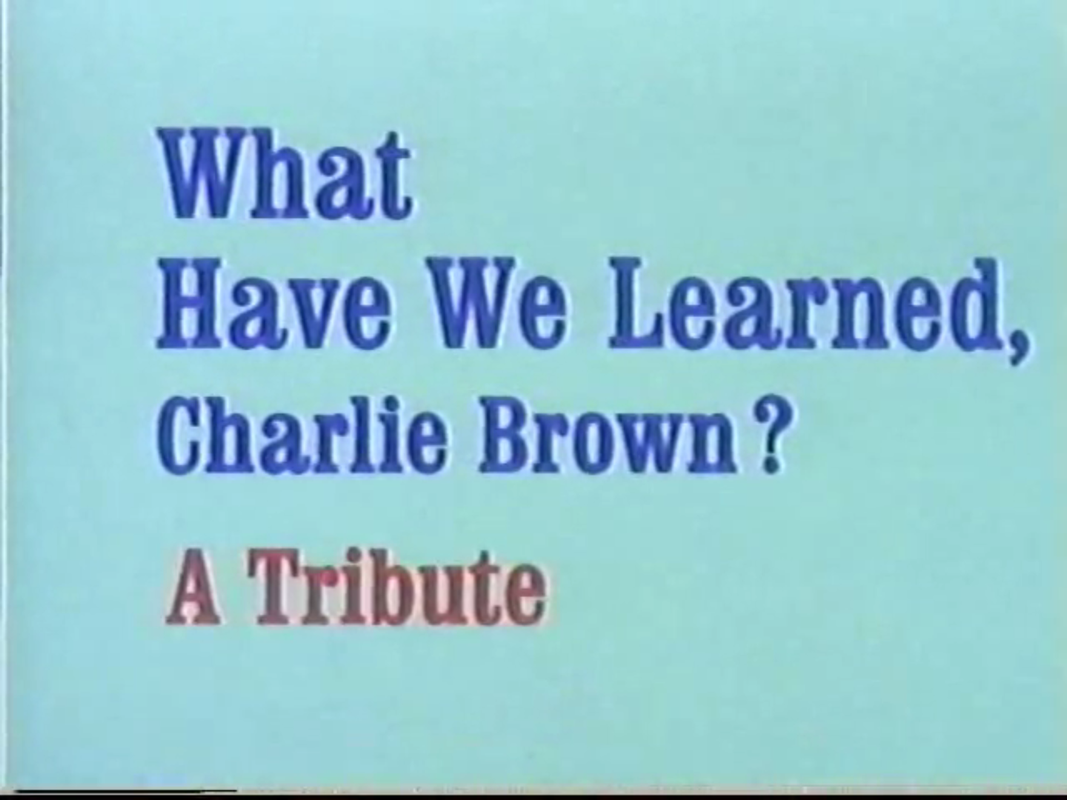
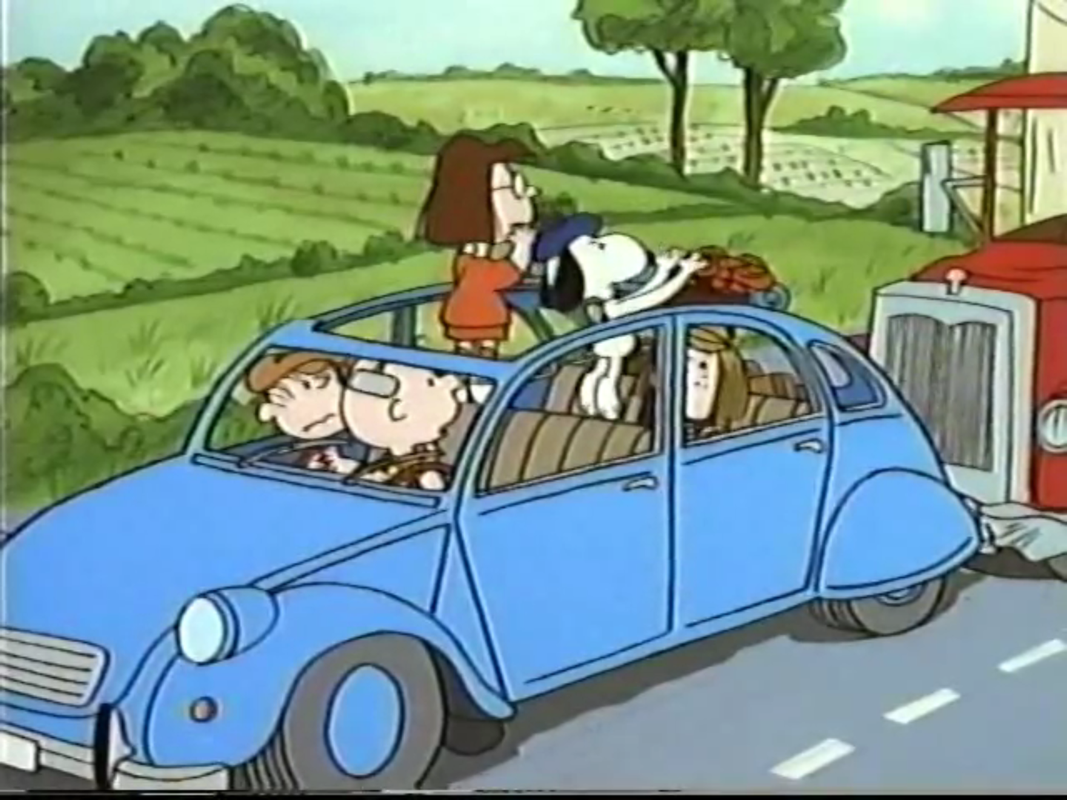
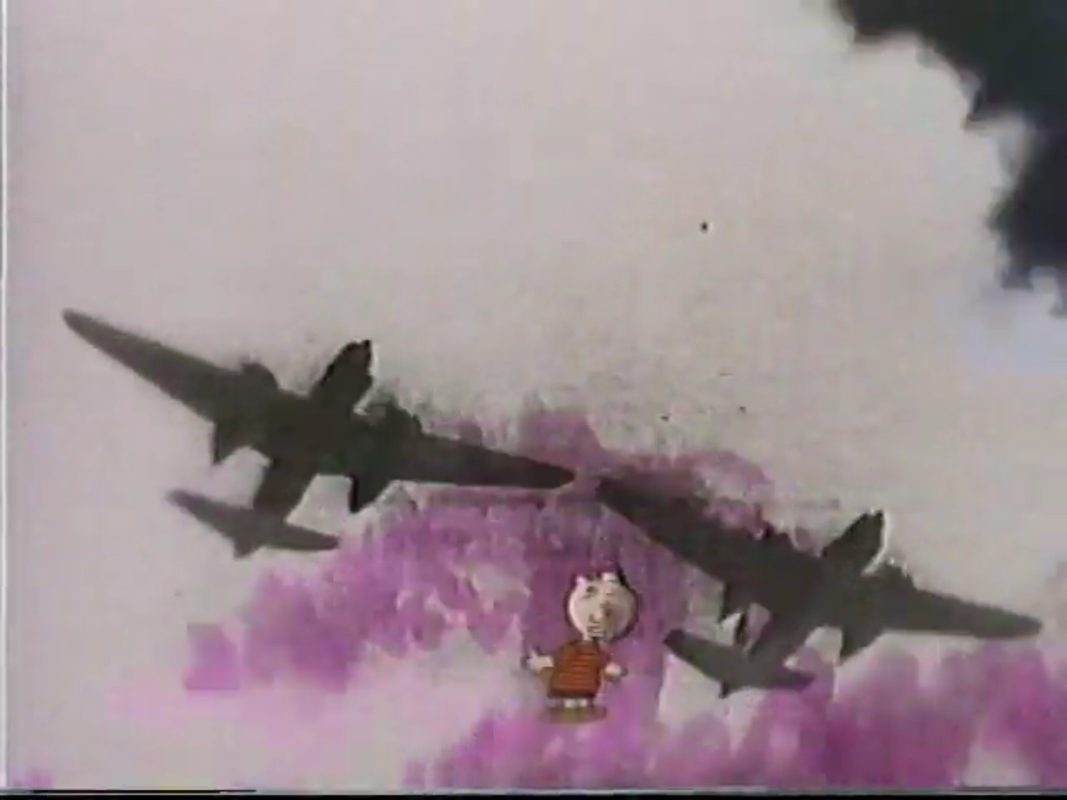
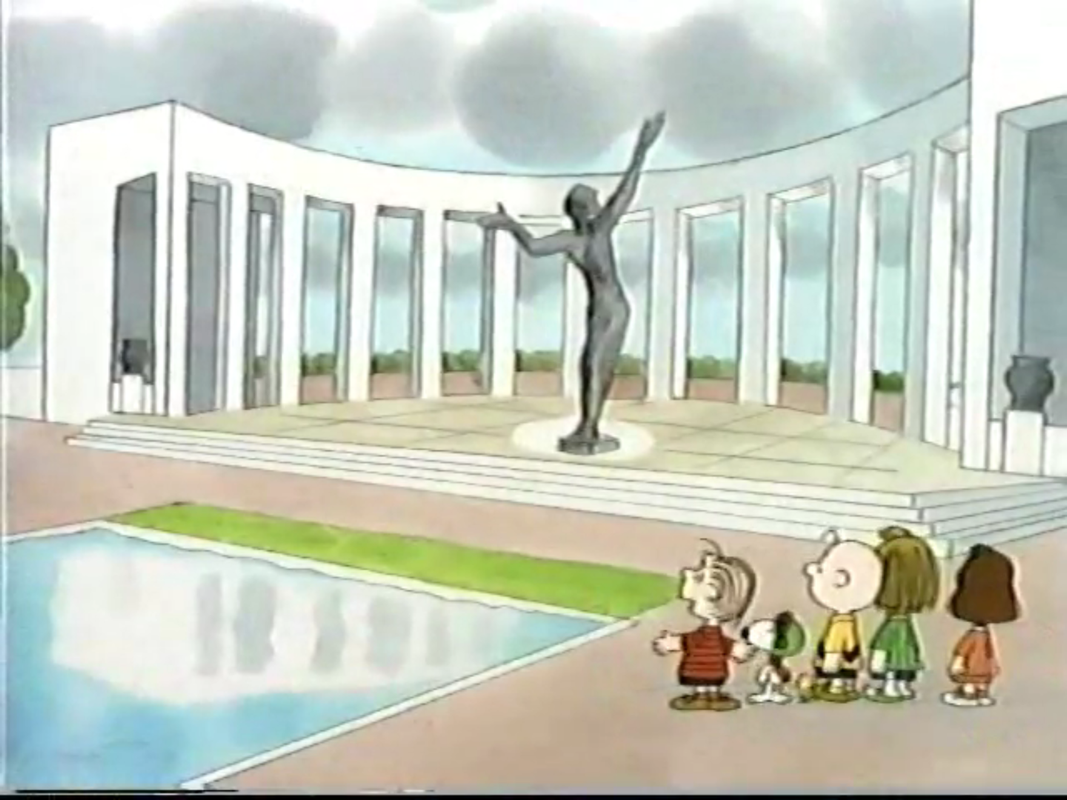
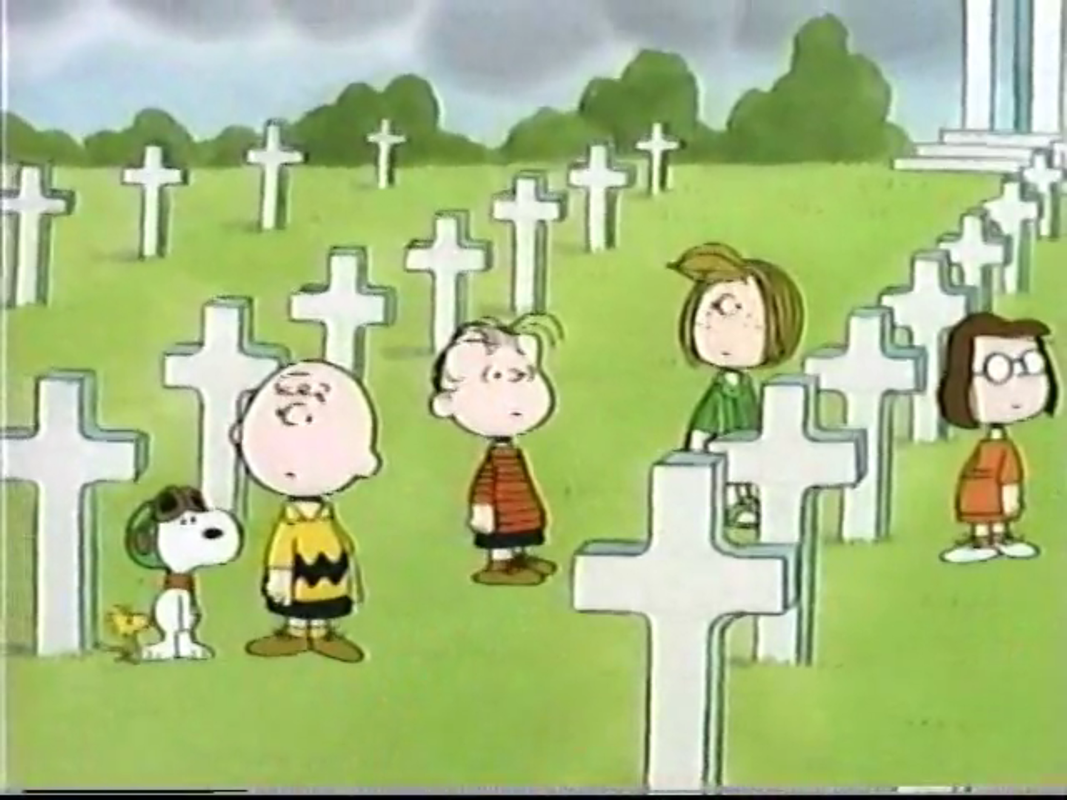
No comments:
Post a Comment